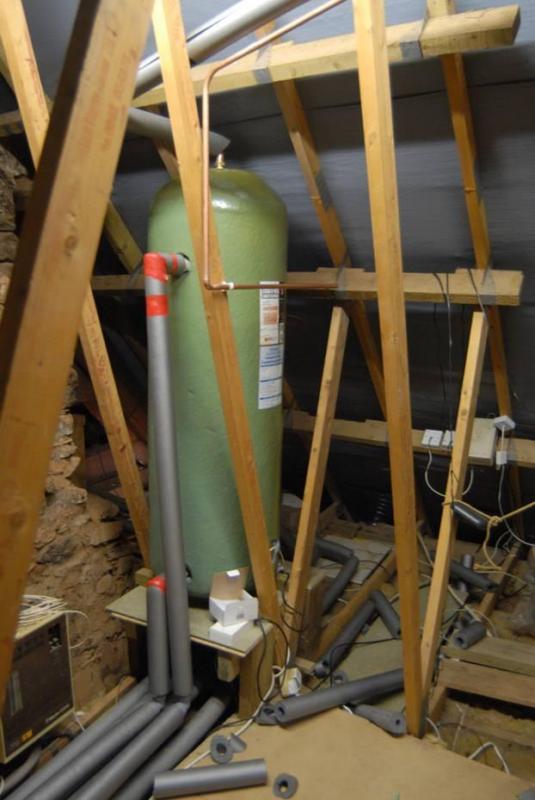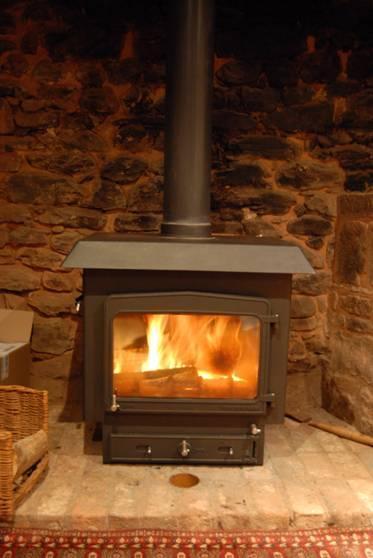Tony ("Agile") said:
My pump with swept tees would do that!
You could monitor the temperature of each pipe, ideally about half way up, and then trigger a 555 timer to run the pump for about 15 seconds to correct the direction of flow!
I dont think your diagram is likely to be what you have fitted. Surely the water in the rads, oil boiler and wood stove is not all the same is it?
The swept tee is now my equal favourite with another idea I've had, which is to add a zone valve to where the CH flow meets the heat store. This zone valve would normally draw from the heat store, but in the situation I've described it could switch to suck direct from the flow from the stove thus circulating around it under pressure. What appeals to me about this is that I don't need a second pump, but I'd have to think carefully about where to attach the pipe.
The diagram is correct: all the same water - why not? Remember that the heat store is not domestic hot water, but just a reservoir in the system.
"doitall" said:
What is the make model of the store, and what was the reason for no expansion pipe on the primary flow.
Bog standard 210 litre direct hot water cylinder off the shelf. Cost about £240. So-called "heat stores" tend to be £1000 upwards - silly money! It came with 25mm foam lagging, so I've since wrapped loft insulation round it to raise this to about 250mm thickness. You are looking at the side from which the CH pipes come in and out, those from the stove are 180 deg around the other side out of sight. You can also see the expansion (lagged) and fill (not yet lagged) pipes going off to the header tank above and to the right out of shot.
The diagram isn't perfect: there is an expansion pipe from the top of the heat store to above the header tank, and also another expansion pipe from near the pump to ditto. There are also two separate fill pipes, and lever valves dotted around in strategic places to isolate bits of the system.
What part of Devon are you.
Just outside Tiverton.
"Doitall" said
I would like to see more information on the stove and store.
The store is shown above, here is the stove. It's a "Fireview" 20kW model from Woodwarm, Cullompton, Devon. It is fully boilered: sides, back and roof, plumbed in series as the manufacturers recommend from side/back boilers into roof. Sorry, I don't currently have a photo of the plumbing round the back.
I take your, and others', point that an anti-syphon loop should dip down below the back. You can't see the piping here because it is neatly hidden behind the chimney, but it doesn't do this - going instead straight into the side/back boilers at their base. However you can see that it is a solid hearth (with rock below) so it could only dip down about 5 inches. (BTW it was plumbed in by a qualified plumber well used to dealing with solid fuel devices and mixed CH systems.)
I can imagine that this might contribute to the problem, but in normal usage it is OK.




